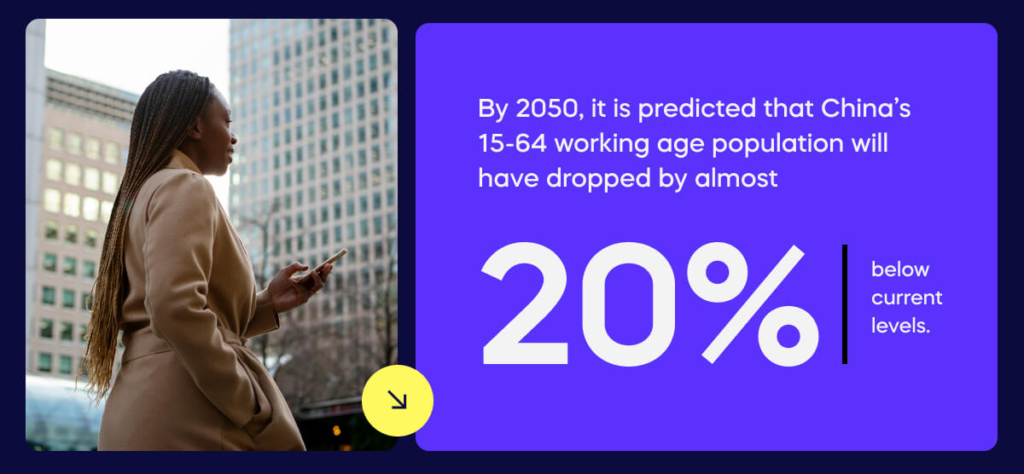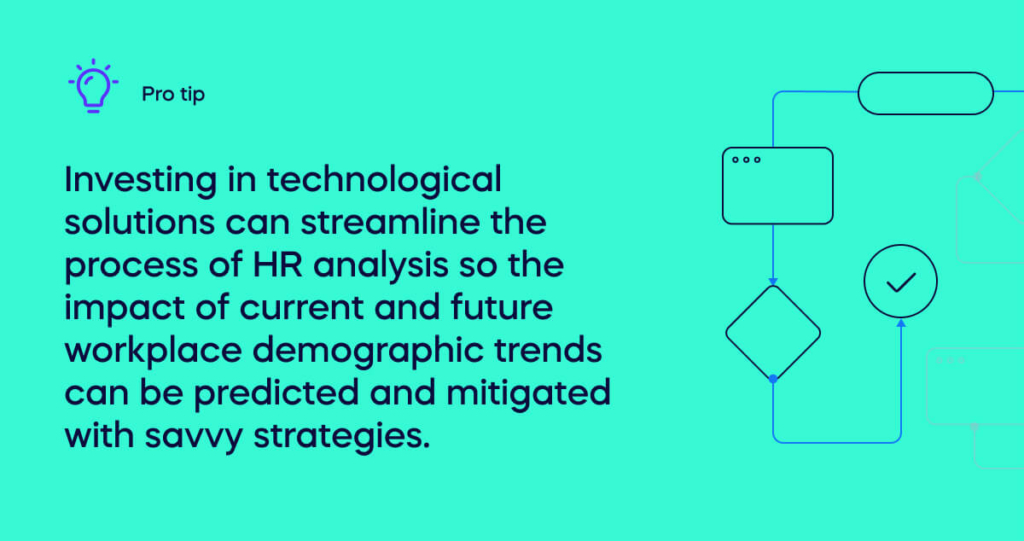It is no exaggeration to say that in the past two years, the world has changed forever. Pandemic-driven lockdowns forced not only temporary closures of some workplaces, but a mass movement towards remote working wherever that was feasible. Offices worldwide lay empty for months at a time as employees set themselves up from their homes. And with the changes to the world and to workplaces, demographic changes happened too.
When demographics change, it usually has an impact on labor markets and this, in turn, affects how employers recruit, where they recruit from, and whether any skills gaps or worker shortages emerge. The demographics of towns, cities, regions and countries generally have a direct effect on workforce demographics, which can present challenges for employers – and the most obvious and possibly challenging workforce demographic shift can happen when you are operating amid an aging population.
The impact of the pandemic on US workforce demographics
The Covid-19 pandemic and the subsequent disruption that it brought created demographic shifts that affected workforces worldwide. In the US, for example, workforce demographics are being affected by a range of factors, leading to labor shortages and skills gaps across a range of industries.
An aging US population, combined with more older workers taking early retirement, has created more vacancies that some employers are struggling to fill. For older US workers, surging equity markets have boosted pension plans, making retirement look more attractive than returning to the pre-Covid days of commuting to offices and factories. Even when investment experts advise caution in relation to taking early retirement, many older workers may not be deterred. In addition, a slower birth rate means not as many young people are joining the workforce.
A perfect storm in China and elsewhere

In China, the combination of an aging population, a declining birth rate that will take years to overcome following the reversal of the one-child policy, is predicted to have long-term effects on workforce demographics for the country. By 2050, it is predicted that China’s 15-64 working age population will have dropped by almost 20% below current levels.
However, China is not alone here. According to data from the World Bank, the United Nations and the OECD, the fertility rate in 75 countries is already under the 2.1 replacement rate – and could drop below 2 worldwide by the end of the century. In addition, the 15-64 age group in Germany, Italy and South Korea will fall by a similar level by 2050. In Japan, the drop in this age group is projected to be 40%. This is all part of a global trend that has left aging populations and a smaller pool of young people entering workforces.
So, how do these sorts of country demographics affect workforce demographics?
Country trends are reflected in workplaces
Employers cannot ignore the world around them. When they are undertaking workforce planning and workforce optimization projects, it is important to be aware of the changing demographics as these will usually be reflected in their own workforces. Workforce demographics do not change in a vacuum.
The impact of an aging population on workforce demographics can be immense. When people retire, especially in large numbers, in an aging population, the pool of available labor shrinks. This contraction of the workforce is exacerbated by demographics at the younger end of the age spectrum. Along with declining fertility rates, more young people are spending longer in education – while this means they will be qualified for good quality jobs on graduation, it also means there are not as many people available to do jobs that are better suited to younger people.
For employers, this combination of a labor shortage and better qualified young workers means that while many impressive young people will eventually enter the workforce, there will be increased pressure to pay higher wages. This creates a candidate-driven job market, which means there are more job vacancies than candidates to fill them. Employers end up competing for the best people, rather than people competing for the vacancies.
A simple analysis of the age of your employees will reveal if you have an aging workforce, which means your organization could be at risk of losing staff to retirement and struggling to replace older staff with qualified younger people.
Using predictive and prescriptive analytics
HR analytics can help employers accurately examine data about the demographics of the areas where they operate as well as the workforce demographics at their places of business. When employers can fully understand the meaning of their workforce demographics, rather than merely collating raw numbers, smarter decisions can be made. This should become an essential part of any credible workforce planning process.

Investing in technological solutions can streamline the process of HR analysis so the impact of current and future workplace demographic trends can be predicted and mitigated with savvy strategies. Traditional HR analytics are descriptive, analyzing metrics such as staff turnover and retention, but predictive and prescriptive analytics use artificial intelligence, machine learning, and statistical modeling to help employers go several steps further for better decisions.
As well as identifying issues with an aging workforce, predictive and prescriptive analytics can help employers work on other issues that might arise from data on workforce demographics. This includes gender balance, accessibility for disabled employees, meeting diversity goals, accommodating parents in the workplace, and determining appropriate and meaningful employee benefits. Deep demographic knowledge is a powerful tool for making these types of decisions effectively, sensitively, and strategically. A data-driven organization should be an effective organization, as long as the data is leveraged properly. To take predictive analytics to the next level, prescriptive analytics can then be applied to help determine what steps can be taken to mitigate the effects of changing workforce demographics. Ultimately, the final decisions will be made by employers, but technological solutions can help clarify what the data means and how to interpret it for business success.

